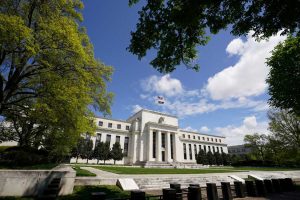SYDNEY — Oil prices surged on Monday after Saudi Arabia and other OPEC+ oil producers announced a surprise round of output cuts, a potentially ominous sign for global inflation just days after a slowdown in US price data had boosted market optimism.
Brent oil futures jumped $5.16 to $85.05 a barrel on news output would be cut by around 1.16 million barrels per day, while US crude climbed $4.88 to $80.55.
The change comes before a virtual meeting of an OPEC+ ministerial panel, which includes Saudi Arabia and Russia, and which had been expected to stick to 2 million bpd of cuts already in place until the end of 2023.
The latest reductions could lift oil prices by $10 per barrel, the head of investment firm Pickering Energy Partners said on Sunday.
Goldman Sachs lifted its forecast for Brent to $95 a barrel by the end of the year and to $100 for 2024.
“Today’s surprise cut is consistent with the new OPEC+ doctrine to act pre-emptively because they can without significant losses in market share,” Goldman said.
“While surprising, this cut reflects important economic and likely political considerations.”
The surge in energy costs somewhat overshadowed Friday’s slower reading for core US inflation which had seen Wall Street end the month on a strong note.
S&P 500 futures dipped 0.4% on Monday, while Nasdaq futures lost 0.7%.
MSCI’s broadest index of Asia-Pacific shares outside Japan eased 0.2%. Japan’s Nikkei edged up 0.4%, though a survey of manufacturers came in just under forecasts.
The jolt to inflation expectations saw yields on US two-year Treasuries rise 3 basis points to 4.104%, while Fed fund futures pared back expectations for rate cuts later in the year.
The market nudged up the probability of the Federal Reserve hiking rates by a quarter point in May to 61%, from 48% on Friday, and had 40 basis points of cuts priced in by year end.
That in turn helped the dollar gain 0.25% on the Japanese yen to 133.14, while the euro eased almost 0.4% to $1.0802. The rise in oil prices is bad news for Japan’s trade balance given it imports most of its energy.
The lift in the dollar and yields nudged gold prices down nearly 0.5% to $1,958 an ounce.
The outlook for US rates could be impacted by data on ISM manufacturing and payrolls out this week, though the reaction to Friday’s jobs report will be muted by the Easter holidays.
Central banks in Australia and New Zealand hold policy meetings this week, with the latter expected to hike by another quarter point to 5.0%.
Markets are wagering the Reserve Bank of Australia (RBA) will pause its tightening campaign after 10 straight rises, though analysts are more divided on whether it might still hike. — Reuters

